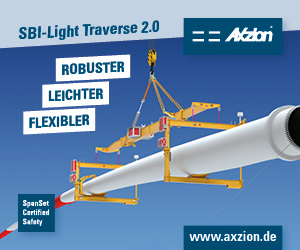Heli and Hangcha Forklifts Equipped with Cummins Engines | Industry News
At CeMat, the Heli H Series and Hangcha XF Series compact forklifts featured a 48 hp (36 kW) Cummins QSF2.8 engine. The 2.8-liter diesel improves power delivery and reduces fuel consumption, as well as enhances forklift truck operation by providing significantly cleaner, quieter and smoother operation.
The QSF2.8 will be available in the Hangcha XF Series of forklift trucks ranging from 1.5-to-3.5 metric ton (3300- to 7700-lb.) lift capacity, and the Heli H Series of forklift trucks from 2-to-3.5 metric ton (4406- to 7716-lb.) lift capacity.
Hangcha and Heli are the two largest manufacturers of forklift trucks in China. With the QSF2.8 built by Cummins in China to meet all emissions requirements and supported by a worldwide service network, this makes the engine an ideal power solution for the Heli H and Hangcha XF global platforms.
“The latest Hangcha and Heli forklift trucks on show at CeMAT meet a growing market demand for cleaner, more efficient and lower cost operation, and we are very pleased to see our QSF2.8 engine contributing to the superior performance these lift trucks will now provide,” commented Hugh Foden, executive director of Cummins Off-Highway Business. “With the QSF2.8, we are able to take our power reach down to the 1.5-to-5 metric ton forklift truck class, bringing the same electronic features as our much larger engines.”
The QSF2.8 offers forklift truck manufacturers the ability to install a single engine platform to meet all emissions requirements across a broad 46 hp-to-74 hp (34-55 kW) range, representing the high volume market for diesel-powered counterbalanced trucks.
The QSF2.8 offers an installation envelope comparable in size and weight to engines smaller than 2.8-liter displacement while offering the durability, low end torque, and power output expected from an engine with a displacement larger than 2.8 liters. The QSF2.8 is capable of the same peak cylinder pressure as Cummins larger 4.5-liter QSB4.5 engine.
The 3.8-liter version of the QSF Series will follow the introduction of the QSF2.8. The QSF3.8 power band extends from 85 to 130 hp (63 to 97 kW), applicable for forklift trucks with up to 10 metric ton (22,046 lb.) lift capacity and above.
Emissions Adaptive Architecture
By starting with a clean-sheet design, the QSF2.8 features a unique ‘adaptive’ architecture enabling the engine to meet all emissions requirements across a wide power band. For regulations, such as European Union (EU) Stage IIIA in Europe, the engine is naturally aspirated up to 60 hp (45 kW), with a small wastegate turbocharger added for applications up to 72 hp (54 kW), without the need for charge air cooling.
To meet EU Stage IIIB and U.S. Environmental Protection Agency (EPA) Tier 4 Final low emissions regulations, a cooled Exhaust Gas Recirculation (EGR) system is incorporated on the engine, fitting within the existing envelope. The light flow EGR system enables a simple Diesel Oxidation Catalyst (DOC) to be used as the exhaust aftertreatment, avoiding the need for a Diesel Particulate Filter (DPF). Cummins DOC is a maintenance-free, “fit and forget” device designed to last the life of the engine.
Smart Electronic Features
The QSF2.8 comes with the same electronic management system found on much larger Cummins engines, ensuring a seamless interface with the forklift truck systems and rapid plug-in diagnostics. All key engine parameters are constantly monitored by highly precise sensors, allowing engine performance to be optimized according to equipment operating conditions.
Smart electronic features provide forklift truck manufacturers with the opportunity to enhance load sensing functions, idle control and transmission protection. The QSF2.8 can also interface with sensor-based features used for operator safety. Other electronic options include selectable speed control activated by the operator to match specific operating conditions, and stall-free protection when climbing ramps.
More Uptime, Less Maintenance
Although the architecture of the QSF2.8 has many aspects in common with that of a higher displacement engine, the wet weight of the highest-rated engine is remarkably low at just 538 lb (244 kg). That is due to the sculpted design of the high-strength cast-iron block and innovative use of composite material for features such as the valve cover. The QSF2.8 takes a design lead from larger Cummins engines by incorporating a rear gear train, providing superior mounting stiffness and lower gear noise.
As a result, the QSF2.8 delivers a level of uptime availability and reduced maintenance not previously seen with engines in the 46 hp-to-74 hp (34-55 kW) power range for compact forklift applications. The oil pump is direct-driven by the engine crankshaft, with no belt changes or service requirements. The water pump is also driven from the crankshaft and features a highly reliable, rust-free impeller. Leak-free sealing techniques are used for all critical interfaces on the engine.
Cummins electronics drive the High Pressure Common Rail (HPCR) fuel system to enable multiple fuel injection events, achieving over 1,600-bar (23,200 psi) pressure capability for cleaner, more fuel-efficient combustion. The HPCR system is highly robust and requires no scheduled service intervention.
A crankcase ventilation breather is featured on the QSF2.8 valve cover to reduce emissions and ensure a cleaner engine by removing oil mist and drips. The breather system is service-free, requiring no filter element change. The fuel filter, lube oil and filter are set up for rapid service, with 500-hour change intervals as standard.
Proven Platform
The QSF2.8 off-highway engine shares a parent design with the preceding ISF2.8 engine, already proven in tough, on-highway truck applications worldwide. The Cummins 2.8-liter engine and the higher-output 3.8-liter version of the F Series are manufactured at a world-class facility located in Beijing, established with an investment of $428 million. By the end of 2014, approximately 370,000 F Series engines are expected to be in service.











